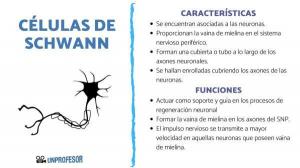Structure of the EUCHARIOT cell

The cell is the structural and functional unit of all living beings on Earth, from small microorganisms such as bacteria to humans. There are, however, two classes of cells, the simple prokaryotic cells typical of bacteria and the more complex eukaryotic cells typical of animals and plants. In this article by a PROFESSOR we will focus specifically on analyzing the eukaryotic cell structure. If you are interested in knowing more about them, keep reading us!
Index
- What is the eukaryotic cell
- What is the structure of the eukaryotic cell?
- Organelles of the eukaryotic cell
What is the eukaryotic cell.
Between the two types of cells that make up living beings, leukaryotic cell (from the Greek eu- ‘true’ and karyon ‘nucleus’) are those cells that have a well-defined cell nucleus, that houses and protects genetic material (DNA), thus distinguishing itself from primitive prokaryotic cells, whose genetic material is scattered throughout the cytoplasm. Furthermore, unlike prokaryotic cells, eukaryotic cells possess organelles specialized in different functions.
One of the fundamental facts in the evolution of life and in the appearance of greater biodiversity was the appearance of eukaryotic cells, since made possible the emergence of the higher realms: protists fungi, plants and animals.
It has not yet been possible to give a very clear explanation of these facts, but the most accepted theory proposes a process of symbiosis between two prokaryotic cells, probably a bacterium and an archaea, which would end up forming the same organism after several generations, becoming mutually dependent. This theory was raised by the biologist Lynn Margulis in 1967 and is called endosymbiotic theory or serial endosymbiosis theory
What is the structure of the eukaryotic cell?
The eukaryotic cell is made up of a plasma membrane delimiting a cytoplasm where the cell nucleus and organelles are found. Plant cells also have a cell wall outside the membrane and some unique organelles.
Cellular wall
It is exclusive to plant cells and fungi. The cell wall surrounds the plasma membrane and provides rigidity to the cell. In vegetables, it is formed mainly by cellulose fibrils and other molecules such as hemicelluloses or pectin. In mushrooms, it is made up of quinine or mannan.
Plasma membrane
The plasma membrane is found delimiting the cytoplasm of eukaryotic cells from the environment that surrounds them or the extracellular environment. Throughout history there have been many hypotheses about its components, currently the fluid mosaic model is accepted, according to which the Plasma membrane is composed of a lipid bilayer where there are different types of lipids such as phospholipids or cholesterol with proteins embedded in she. Also in the outer layer it contains carbohydrates, constituting glycolipids. Mushrooms contain ergosterol instead of cholesterol.
Cytoplasm
The cytoplasm is the aqueous medium that forms the interior of cells and surrounds the cell nucleus. It has some ions such as potassium or magnesium dissolved in its interior, also proteins, RNAs, ribosomes or glycogen granules. In its interior it also contains the cellular organelles, although they are delimited by a membrane.
Nucleus
It is a small more or less spherical structure found in the cytoplasm and is surrounded by a nuclear double envelope with pores that communicate with the cytoplasm and serve for the exchange of substances. The nucleus houses the cellular material and important processes such as DNA replication or transcription take place inside it.

Organelles of the eukaryotic cell.
The organelles are scattered throughout the cytoplasm of the cell and are surrounded by a cytoplasmic membrane (those that are not surrounded are not considered organelles, but inclusions):
Endoplasmic reticulum
The endoplasmic reticulum is a system of tubules that surround the nucleus. It is divided into two, rough endoplasmic reticulum, with ribosomes on its surface and which is responsible for synthesize proteins and modify them and the smooth, which is responsible for synthesizing lipids and detoxification of cell.
Golgi apparatus
It is a system of flattened and stacked saccules. The Golgi apparatus It surrounds the reticulum, receives proteins from it, modifies them, and exports them outside the cell or to other cellular organelles.
Lysosomes
They are organelles that have an acidic pH and are responsible for the digestion of proteins that the cell captures from outside (mainly) or from components of the cell. Due to this function, they are very abundant in immune cells.
Peroxisomes
They are small organelles that are mainly responsible for cell detoxification, degradation of some lipids or synthesis of bile acids. For this reason they are very abundant in liver cells.
Mitochondria
Mitochondria are the central organelle of the cell, as they carry out important functions metabolic such as lipid breakdown, ketone body production, or energy production mobile.
Plastos
They are central organelles in plant cells. There are different classes of plastics and they carry out important functions such as photosynthesis, the storage of pigments such as carotenoids or energy substances such as starch.
Vacuoles and vesicles
They are typical of plant cells and are responsible for the storage of substances such as proteins or the maintenance of cell shape.
Centrioles
They are not organelles themselves, as they are not surrounded by a membrane. They are responsible for emitting microtubules that give structure to the eukaryotic animal cell and allow its division.
If you want to read more articles similar to Structure of the eukaryotic cell, we recommend that you enter our category of biology.
Bibliography
- Rodríguez, W. J. G. (2018). General structure of eukaryotic cell. Logos High School Science Bulletin No. 2, 5 (9).
- Mamani Quispe, L. (2018). The cell: structure. Cell membrane, cell permeability, mechanisms of transport of substances through the membrane.



